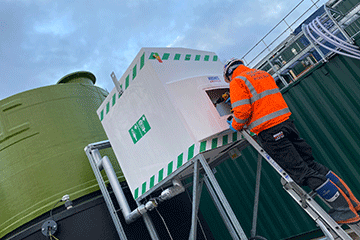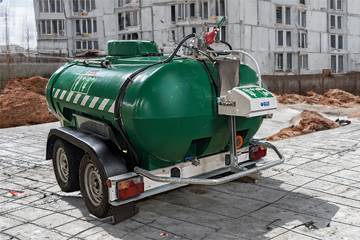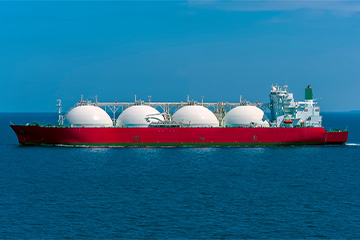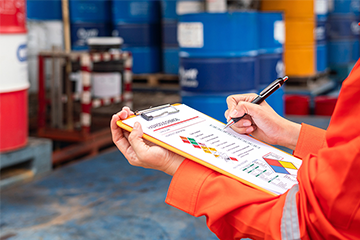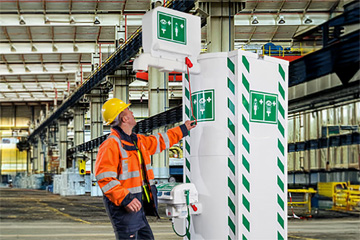Enquiry List () (0)
- Apr 16, 2024
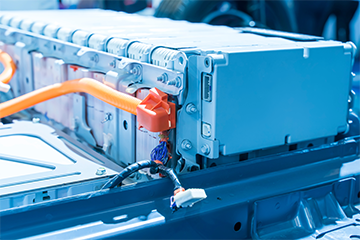
The Importance of Safety Showers in the US Gigafactory Boom
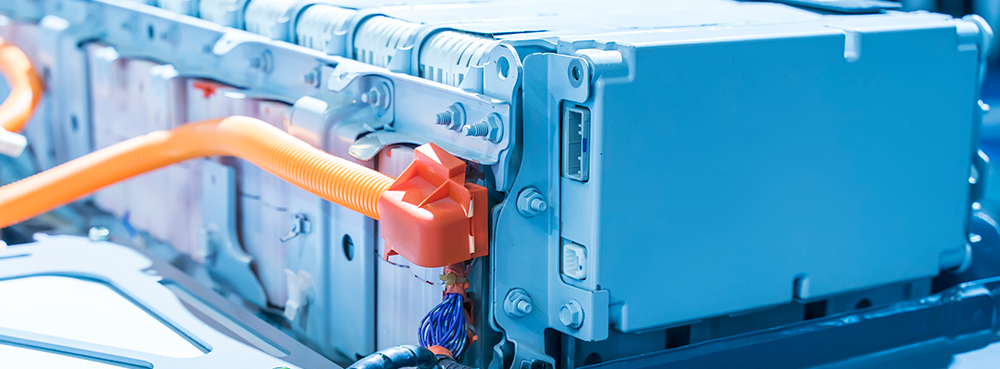
Work is already well underway in preparation for the phase-out of petrol vehicles across the US.
As part of President Biden’s goal to make 50% of all new domestic vehicle sales electric by 2030, the White House has announced the Inflation Reduction Act (IRA). IRA requires 60% of the value of battery components to be produced in North America in 2024 to qualify for half of the tax credit, and from 2029, the percentage will increase to 100%¹.
It’s helped accelerate the speed of gigafactory projects in the US, with 29 factories expected to be running by the end of 2030².
We don’t have exact numbers for every gigafactory but by the end of 2030 we can expect around 150,000 people3, 4*, if not more, to be working in these factories.
Due to the nature of the hazards involved in production, battery gigafactories are high-risk environments. But why?
The science behind lithium-ion car batteries
Lithium-ion batteries are formed of four main components.
- The capacity of the battery is determined by the cathode - it's the source of the lithium ions.
- The ions are stored in the anode, which enables the electric current to flow through an external circuit when the battery is charged.
- The separator is the physical barrier that keeps the cathode and anode apart.
- The electrolyte acts as a conduit of lithium ions between the cathode and anode.
Before a battery can be installed, the factory must charge and test the unit to identify any faults. It can become faulty when mishandled, overcharged, short-circuited, or heated up - leading to issues such as the battery walls expanding or splintering, which can allow some of the internal compounds to leak out.
Electrolytes are made up of organic compounds, such as salts and solvents. When contained inside a battery unit, the electrolyte doesn't pose an immediate risk. If they spill from a battery, because of an accident or if they're handled improperly, they can react with air and water to produce hydrofluoric acid - which poses a significant risk.
What are the effects of a hydrofluoric acid burn?
Abbas Kanani MRPharmS, superintendent pharmacist at Chemist Click, explained the dangers hydrofluoric acid poses when it comes into contact with the body.
He said: “Hydrofluoric acid is one of the strongest acids that causes corrosive burns and can also involve underlying bone. It is highly toxic and damaging. Contact with high-concentration products can be fatal.”
When a person first comes into contact with hydrofluoric acid, they’ll experience severe pain at the site of the burn. Kanani elaborated stating: “There may be swelling, slow-healing burns, blisters or a rash present and pain can occur even if there are no visible burns.”
The lasting damage can be significant too, with Kanani adding: “Skin damage can take a long time to heal and can result in severe scarring. Eye exposure can cause permanent blindness or total destruction of the eye.”
Safety showers: providing front line protection in gigafactories
Battery gigafactories are extremely complex facilities, with a variety of different conditions. From manufacturing areas featuring extremely high temperatures and little to no humidity for the drying process, to clean rooms with high filtration levels to reduce the presence of dust particles.
Naturally, PPE is imperative, including head, face, respiratory and hand protection.
However, emergency procedures must be in place if there is an accidental leak. This is where safety showers and eye washes play such an important part in keeping workers safe. They offer an immediate line of defense against the dangers of hazards, like hydrofluoric acid in the gigafactory environment.
To thoroughly decontaminate in the event of corrosive spills, the ANSI Z5358.1-2014 standard states those affected should flush the skin or eyes for at least 15 minutes. The water delivered should be tepid (between 60°F and 100°F), and comply with a designated flow rate (depending on its class).
By flushing away chemical contaminants and minimizing the effects caused by chemical exposure, safety showers have a vital part to play in the lithium-ion car battery boom.
References:
- FACT SHEET: Biden-Harris Administration Announces New Private and Public Sector Investments for Affordable Electric Vehicles, The White House, April 17, 2023. Accessed: April 10, 2024.
- The Gigafactories and Jobs Headed to US Shores, Roberto Baldwin, Sustainable Mobility Career Centre, October 06, 2023. Accessed: April 10, 2024.
https://sustainablecareers.sae.org/article/gigafactory-united-states-locations-jobs/
- 60K Tesla Workers in Austin? That’s the plan, Kathryn Hardison, Austin Business Journal, September 20, 2023. Accessed: April 10, 2024.
https://www.bizjournals.com/austin/news/2023/09/20/tesla-exec-manufacturing-expo-presentation.html
- The Gigafactories and Jobs Headed to US Shores, Roberto Baldwin, Sustainable Mobility Career Centre, October 06, 2023. Accessed: April 10, 2024.
https://sustainablecareers.sae.org/article/gigafactory-united-states-locations-jobs/
*Estimated figure based on a total sum of job figures referenced in source 3 and figures referenced in source 4.




